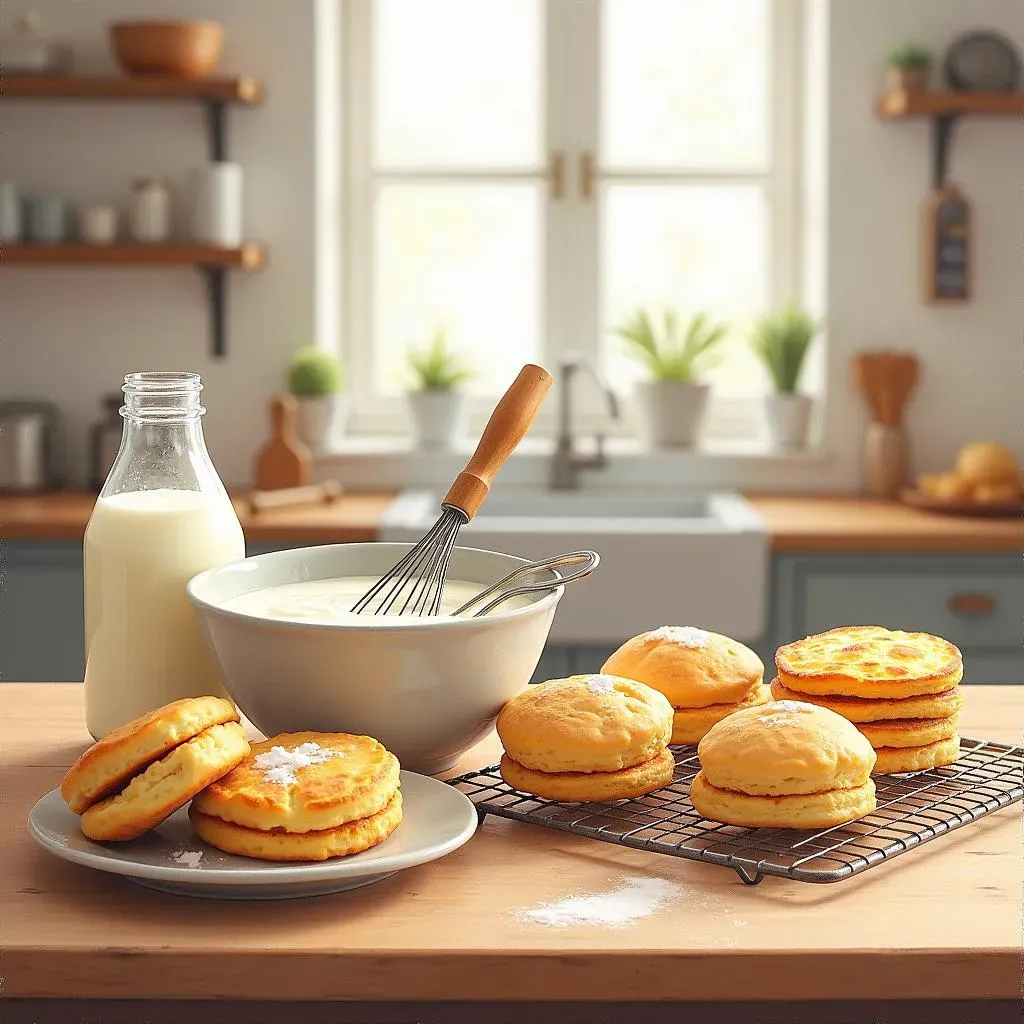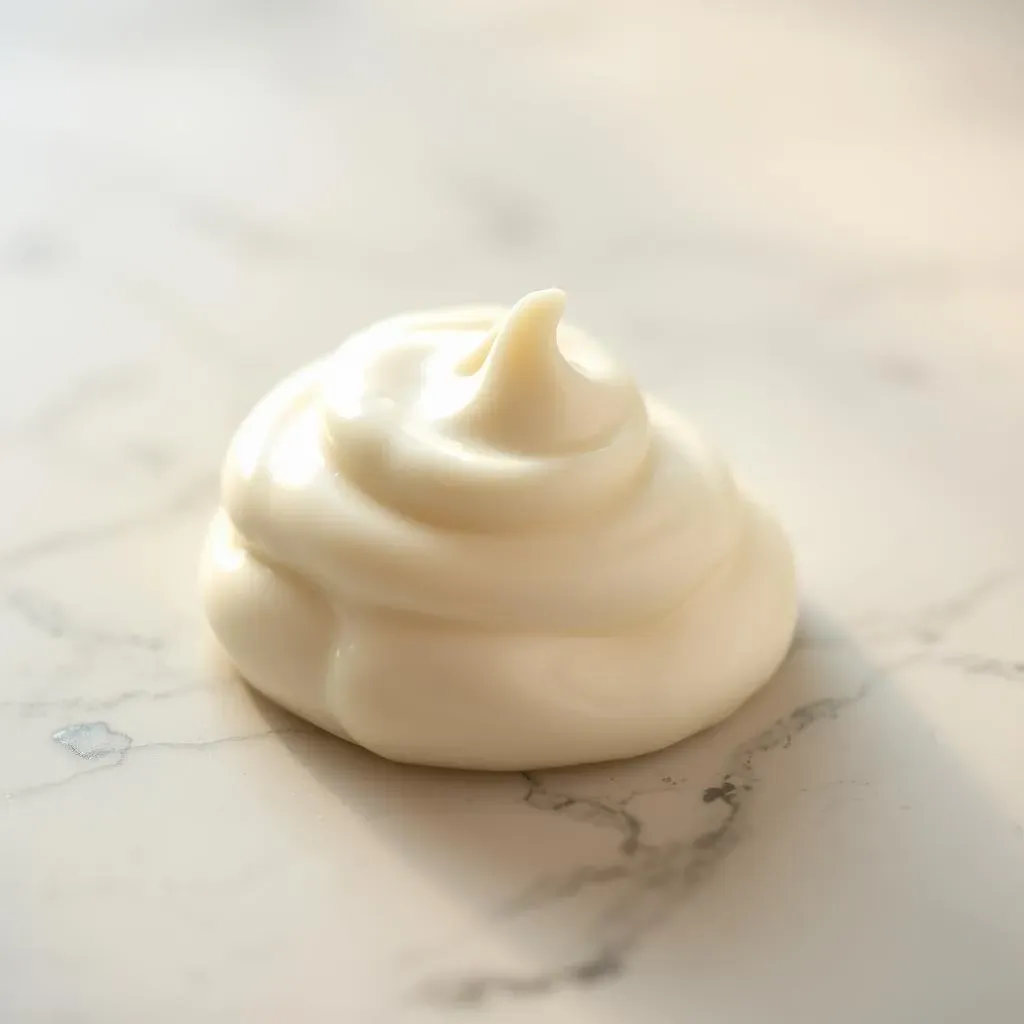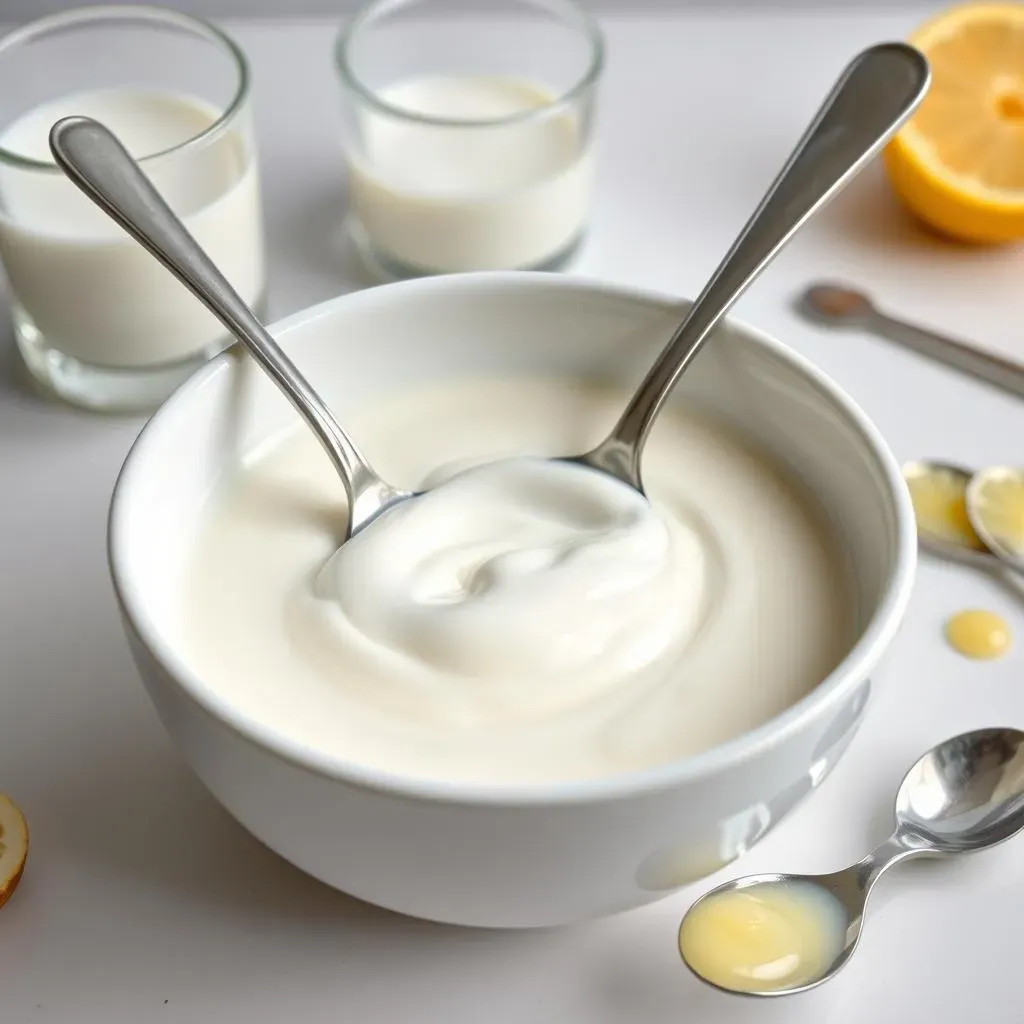Table of Contents
Ever found yourself mid-recipe, craving that tangy, tender crumb that only buttermilk can provide, only to discover you're fresh out? I’ve been there, staring into the fridge, wondering if my baking dreams were about to crumble. But don't panic, because there’s a secret weapon hiding in your dairy drawer: sour cream. Yes, that creamy, slightly tangy stuff is a fantastic base for a quick buttermilk substitute with sour cream. This article isn’t just about a quick fix; it’s about understanding why buttermilk works its magic, how sour cream steps up to the challenge, and the simple steps to create this substitute. We’ll break down the science, the method, and even some tasty ways to use your new creation. You’ll learn why buttermilk is essential in baking, how sour cream mimics its properties, and finally, how to whip up this easy substitute with the right ratio. So, let's get started and turn that baking dilemma into a delicious success.
Why You Need a Buttermilk Substitute

Why You Need a Buttermilk Substitute
The Magic of Buttermilk
Okay, so you're baking, and a recipe calls for buttermilk. Seems simple enough, right? But have you ever stopped to wonder what this slightly sour liquid actually does? It's not just milk that's gone a bit off, trust me. Buttermilk is key for adding a specific tang that brightens up flavors, think of it like a secret ingredient that gives your baked goods a little zing. More importantly, it reacts with baking soda, creating those light, fluffy textures we all crave. Without it, your cakes might be dense, your pancakes flat, and your biscuits…well, just sad. I once tried to make a cake without it, and it was basically a brick – a delicious brick, but still a brick.
And here's the thing, not everyone keeps buttermilk on hand. It's one of those ingredients that you buy for a specific recipe and then wonder what to do with the rest. Or, you might live somewhere that doesn't have it readily available. That's where the need for a good substitute comes in. It’s not about cutting corners; it’s about being resourceful and adaptable in the kitchen. Baking should be fun and creative, not limited by what you do or don't have in your fridge. So having a buttermilk substitute in your back pocket means you can bake whenever the mood strikes, without having to make a special trip to the store.
Why Bother with a Substitute?
Now, you might think, "Why not just use regular milk?" Well, you could, but you'd miss out on that signature tang and the light, airy texture. The acidity in buttermilk is what makes it different. It's that acidity that tenderizes gluten, giving you a softer crumb, and it’s what helps your baked goods rise beautifully. If you swap it out with regular milk you won't get the same chemical reaction, and your results will be different, and not in a good way. It’s like trying to start a fire without kindling; it's just not going to work the same way. I learned this the hard way when my "fluffy" pancakes turned into something more akin to hockey pucks.
So, finding a reliable buttermilk substitute is crucial for any baker, especially if you're a bit spontaneous in the kitchen like I am. It means you can whip up your favorite recipes without any last-minute grocery store runs. It's about having the freedom to bake what you want, when you want, without compromising on taste or texture. Plus, knowing a good substitute makes you a more confident baker. You're not just following a recipe; you're understanding the science behind it, and that's empowering.
Buttermilk Benefit | Why It Matters |
|---|---|
Tangy Flavor | Adds depth and brightness to baked goods. |
Acidity | Reacts with baking soda for a light texture. |
Tenderizes Gluten | Results in softer, more delicate crumbs. |
Sour Cream: The Unsung Hero of Buttermilk Substitutes

Sour Cream: The Unsung Hero of Buttermilk Substitutes
Okay, so we've established why buttermilk is so important, but what makes sour cream a good stand-in? Well, it's all about that tang and thickness. Sour cream, like buttermilk, has a good amount of lactic acid, which gives it that characteristic tartness. This is key because, as we talked about, that acidity is what does all the magic in baking, reacting with baking soda and creating those light, airy textures. It is not just a creamy blob, this dairy product is a flavor bomb waiting to be unleashed. I remember the first time I tried using sour cream as a substitute, I was skeptical, but the results blew my mind. It brought a level of tenderness and moisture that I didn’t expect.
Another thing that makes sour cream a great substitute is its texture. It's thicker than milk, which helps mimic the body of buttermilk. This thickness is important because it helps to create a richer, more moist end product. Think about it like this: if you use plain milk, it's thin and watery, but sour cream is a thick, luscious cream. That extra body helps to create a batter that's just the right consistency. It’s like using a good quality paint to create a masterpiece rather than the cheap stuff. Plus, the added fat in sour cream can also contribute to a more tender crumb. So, when you’re in a pinch, sour cream isn't just a decent option, it's a fantastic one.
Sour Cream Property | Why It Works as a Substitute |
|---|---|
Lactic Acid | Provides the necessary tang and reacts with baking soda. |
Thick Texture | Mimics the body of buttermilk, creating a moist batter. |
Fat Content | Contributes to a tender, richer crumb. |
How to Make a Buttermilk Substitute with Sour Cream

How to Make a Buttermilk Substitute with Sour Cream
The Simple Swap: Sour Cream and Milk
Alright, let’s get down to brass tacks. Making a buttermilk substitute with sour cream is surprisingly easy, and you probably have everything you need already. The key here is the ratio: we’re not just slapping sour cream into a bowl and hoping for the best. You need to think of it like a chemistry experiment, but a delicious one. The basic idea is to use equal parts sour cream and milk. This combo gives you the right balance of acidity and liquid needed to mimic buttermilk. I've tried various ratios, and this one consistently delivers the best results for me, providing that perfect tang and moisture every time. It’s so straightforward, it almost feels like cheating, but in the best way possible.
To make it, simply grab a bowl and measure out your sour cream and milk. You can use any kind of milk you have on hand – whole milk, 2%, or even skim milk. Just remember that the higher the fat content, the richer your substitute will be. Once you’ve got your ingredients, whisk them together until they’re smooth and well combined. You want to get rid of any lumps of sour cream to create a uniform mixture. It's like making a smooth sauce; you want everything to be well incorporated. And that’s it! Your buttermilk substitute is ready to go. No need to wait for it to sit or anything. Quick, easy, and ready to bake.
Tweaking for Texture and Taste
Now, while the equal parts method is a great starting point, sometimes you might want to tweak things a bit. If your sour cream is particularly thick, you might find that your substitute is a little too dense. In this case, you can add a touch more milk until you reach the desired consistency. Think of it like adjusting the volume on your favorite song – a little tweak can make all the difference. The goal is to get a mixture that's similar in texture to buttermilk, which is pourable but not watery. I usually aim for something that coats the back of a spoon nicely.
Another thing to consider is the tang. If you want a more pronounced buttermilk flavor, you can add a tiny bit of lemon juice or white vinegar to the mixture. Just a teaspoon will do the trick. This will boost the acidity and give your substitute that extra zing. It’s like adding a pinch of salt to a dish – it enhances the other flavors. I’ve experimented with different acids, and I find lemon juice gives a brighter, fresher flavor, while vinegar adds a more traditional tang. It’s all about personal preference, so feel free to play around and see what you like best. The kitchen is your playground, after all.
Ingredient | Purpose | Notes |
|---|---|---|
Sour Cream | Provides acidity and thickness | Use full-fat for best results |
Milk | Adds liquid and thins the mixture | Any kind of milk will work |
Lemon Juice or Vinegar (Optional) | Boosts the tang | Add just a teaspoon for a flavor boost |
Using Your Sour Cream Buttermilk Substitute in Recipes

Using Your Sour Cream Buttermilk Substitute in Recipes
Baking Bliss: Where This Substitute Shines
Alright, so you've whipped up your buttermilk substitute with sour cream, now what? Well, the good news is that this substitute is incredibly versatile. It works wonders in almost any recipe that calls for buttermilk. Think fluffy pancakes, tender cakes, moist muffins, and even savory dishes like fried chicken. I've used it in everything from my weekend brunch pancakes to my go-to carrot cake recipe, and it hasn’t let me down yet. The key is to use it in the same way you would use regular buttermilk, no need for fancy adjustments or complicated calculations. It's a one-to-one swap, making it super simple to incorporate into your baking routine. It’s like having a magic wand that transforms your recipes with minimal effort.
One thing to remember is that the higher fat content of sour cream can sometimes make your baked goods a little richer. This isn’t a bad thing, but it’s worth being aware of. It means your cakes might be a little more moist, your muffins a bit more tender, and your biscuits a tad more decadent. I see it as a bonus, a little extra indulgence without any extra work. So, don’t be shy about using this substitute in your favorite recipes. It’s a great way to add a little extra something special. And if you’re feeling adventurous, why not try it in a new recipe? The possibilities are pretty much endless, and that's part of the fun of baking.
Savory Sensations: Beyond the Sweet
Now, while we often associate buttermilk with sweet treats, don't forget that it's also fantastic in savory dishes. Our buttermilk substitute with sour cream is just as effective in these recipes. Think about using it to marinate chicken for frying. The acidity in the sour cream tenderizes the meat, making it incredibly juicy and flavorful. I've made some of the best fried chicken using this trick, and it's become a staple in my kitchen. The tang also helps to balance out the richness of fried foods, creating a more complex and delicious flavor profile. It's like adding a secret ingredient that everyone loves but no one can quite put their finger on.
Beyond fried chicken, you can use this substitute in things like creamy salad dressings, dips, or even as a base for savory sauces. The possibilities are endless. The key is to experiment and see what works best for your taste. Don’t be afraid to go off-script and try something new. I once used it in a creamy pasta sauce, and it added a subtle tang that made all the difference. It's that kind of versatility that makes this substitute such a valuable tool in any kitchen. So go ahead, try it in your favorite savory recipes and see how it elevates them to new heights. You might just be surprised at how well it works.
Recipe Type | How to Use the Substitute | Expected Outcome |
|---|---|---|
Pancakes & Waffles | Use 1:1 ratio as buttermilk | Fluffy, tender, and slightly tangy |
Cakes & Muffins | Use 1:1 ratio as buttermilk | Moist, rich, and flavorful |
Fried Chicken | Use as a marinade | Juicy, flavorful, and tender |
Salad Dressings & Dips | Use as a base | Creamy, tangy, and flavorful |